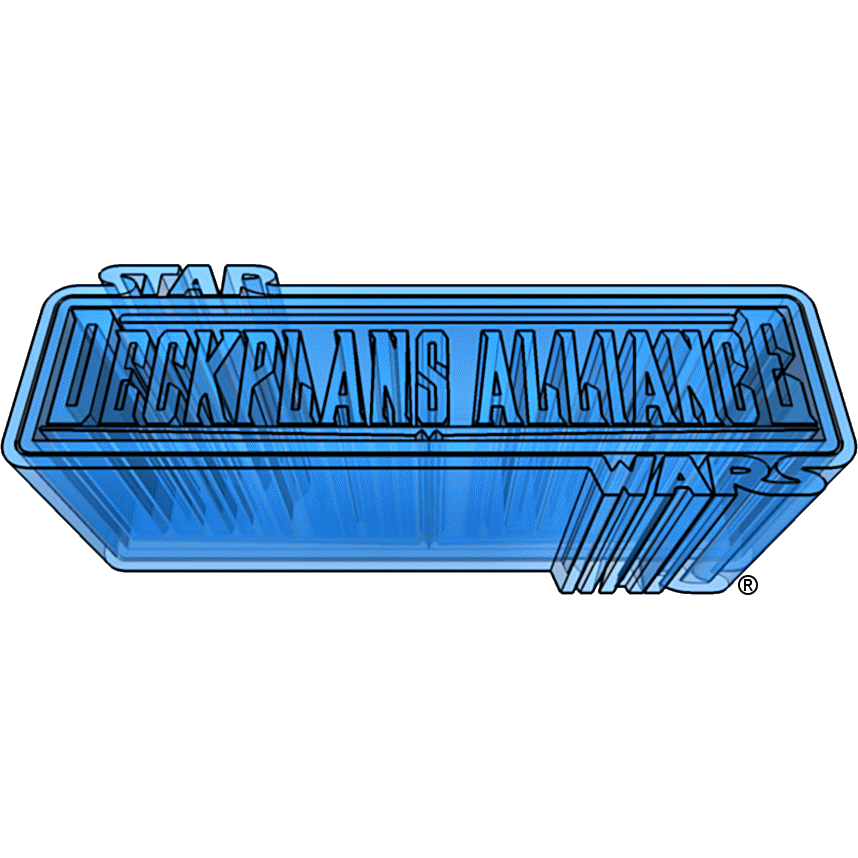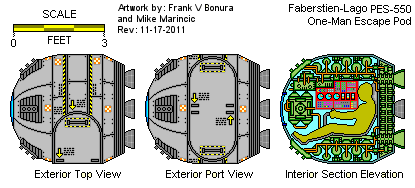

homebrew project developed by Frank V Bonura with some interior components by Mike Marincic. The pod was developed to fit in tight locations on various space transport models and by various space transport manufacturers.

Capsule: In order to comply with Imperial Law, (See GG#6 page 43 "Escape Equipment") the Personnel Escape System was developed. These one man escape pods are commonly used on light freighters due to space limitations. The small size of these pods allows them to be launched from standard airlocks. The PES-550 can be configured for port or starboard entry, and can be programmed to launch from any ship or airlock wide enough to fit through. Once activated, the PES uses its repulsor lift to automatically load and launch itself. During the first round of launch the PES uses its launch thrusters to rapidly push itself from its host ship. After the launch thrusters run out of fuel, the ion drive automatically activates. The PES is capable of automatic control which activates the emergency transponder and navigates the pod towards the closest habitable planet. It then enters orbit or lands depending on passenger selection. If no planets are available, the PES moves to a preset minimum safe distance from its host ship. The PES has a manual override that allows the passenger to take control of the pod and to deactivate the emergency transponder. Thus the PES can be used as an expensive way to drop off passengers to a planet's surface.
— homebrew roleplaying game capsule by Frank V Bonura.
One-man Escape Pod
— homebrew roleplaying game stats by Frank V Bonura.
- Craft: Faberstien-Lago PES-550 Escape Pod
- Type: Escape Pod
- Scale: Speeder
- Length: 1.5 meters
- Crew Skill: Space transports: PES-550
- Crew: 1
- Cargo Capacity: 100 kilograms
- Consumables: 1 week
- Cost: 800 (new), 200 (used)
- Weight: 700 kg
- Maneuverability: 1D
- Space: 1 (launch booster: 4)
- Atmosphere: 210; 600 kmh
- Hull: 3D
- Sensors:
- Passive: 5/0D
The Class-700 will require restocking and a complete overhaul of all its worn/damaged components, after each use, costing 100 credits in parts plus 100 credits in labor (optional if owner performs labor) on average. This pod weighs 700 kg and its weight is included in the cargo capacity stats of ships that use them on this site.